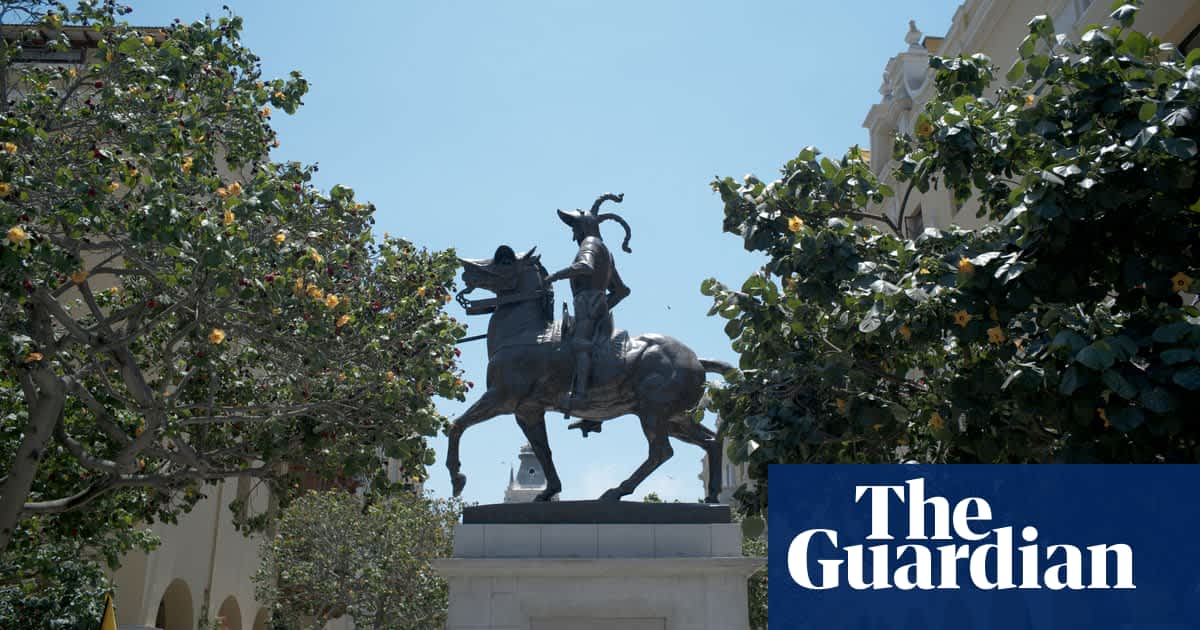Statue returns near former spot 22 years after removal in apparent attempt to rehabilitate Francisco Pizzaro’s legacy
An imposing bronze statue of Francisco Pizarro, Peru’s Spanish conqueror, has been returned to a spot near its former location in Lima’s main square, 22 years after it was removed, in an apparent attempt to rehabilitate the conquistador’s controversial legacy.
Weighing 7 tonnes and standing 5 metres tall, the Italian Renaissance-inspired sculpture of Pizarro astride a horse with his sword drawn was re-inaugurated on Saturday as part of celebrations marking the 490th anniversary of the Peruvian capital city’s foundation.
The main square was closed off to the public and guarded by police as the statue covered in a white cloth was unveiled by Lima’s far-right mayor Rafael López Aliaga and the regional president of Madrid, Isabel Díaz Ayuso. The Spanish politician from the conservative People’s party (PP) had been invited to the Peruvian capital to mark the city’s anniversary.
The symbolic vindication of Pizarro, the conquistador who led 167 Spaniards to defeat the Inca Empire, has provoked mixed reactions in a country still deeply divided along racial and class lines. Pizarro notoriously captured the Inca emperor Atahualpa in 1532 and held him to ransom until the room in which he was held was filled with gold and silver. He then had him executed the following year.
After sacking Cusco, the capital of the Inca empire, Pizarro founded Lima in 1535. Originally known as the City of Kings, the city was the capital of the Spanish Viceroyalty in South America until Peru’s independence in 1821.
Speaking at the ceremony which was also attended by Pizarro’s descendants, Díaz Ayuso said the statue commemorated “not only the birth of a city, but the beginning of a historic encounter that forever transformed the world”.
She added that the statue’s relocation meant “the reunion of the statue of Pizarro with the historical heart of Lima” and showed respect for the city’s history.
But a small group of protesters blew traditional Andean wind instruments made from conch shells and shouted: “Out with Pizarro” and “genocide” as the speeches were being made.
“Peruvians do not want it,” said former presidential candidate Yonhy Lescano on Twitter/X. “We admire Tupac Amaru, Micaela Bastidas [who led a rebellion against the Spanish in the 1700s] and other heroes. We stopped being a colony long ago.”
Source: www.theguardian.com
